We love soups and stews. We love the Moroccan/curry spice combinations (with the exception of cayenne) and tried to "wing" a recipe with the ingredients we had in the house. The spices can be altered to your taste as well as what vegetables are in your home.
Ingredients:
3 carrots, diced
1 onion, diced
3 stalks of celery, diced
1 cup sliced mushrooms
2 cloves garlic minced
1 tsp ginger
1 tsp cumin
1 TBS parsley
1 tsp turmeric
1/4 tsp cinnamon
1/2 tsp cardamon powder
salt and pepper to taste
1 pint canned tomatoes, diced
2 cups vegetable broth or 1 bouillon cube
1 cup lentils, soaked, drained, rinsed, drained
1 sweet potato, diced
2 TBS lemon juice
Directions:
Using the juice from the canned tomatoes, saute the onions, garlic, celery, carrots, and mushrooms.
Stir in the spices and tomatoes. Add the broth, sweet potato, and lentils. Bring to a boil, then reduce the heat to simmer until the lentils and sweet potato are soft, about 10-15 minutes. Stir in lemon juice and simmer for another minute.
Monday, March 30, 2015
Spaghetti Squash Salad
We were able to get spaghetti squash at the farmers' market for a $1. We also love Mediterranean type salads, so this is what we made.
Ingredients:
spaghetti squash
1/2 cup diced red pepper
3 green onions, sliced
1/4 cup sundried tomatoes
1/2 cup broccoli florets
1/4 cup sliced olives
1/4 cup almond feta
dressing:
2 TBS olive oil
2 TBS apple cider vinegar
2 TBS water
1 tsp parsley
1/2 tsp salt
1/4 tsp black pepper
1 clove garlic minced
Stir and pour over salad
Remove seeds and bake the spaghetti squash for 1 hour at 325
Quarter the squash, and cut the squash still in the peel. Scoop it out into a bowl.
Add diced red pepper, onions, tomatoes, olives, feta and gently fold into the squash.
powdery mildew spray
How to Kill Powdery Mildew Instantly!
MILDEW KILLING RECIPE BELOW
 A turn of the knob and a push of the backdoor reveals a late summer rainstorm has retreated from a perfect gleaming sun high in an unblemished sky. The array of flora calls to you as your bare feet move through a moist warming field. As you grin to mother nature for quenching the thirst of your precious food source the corners of your lips begin to drop as your produce ebbs into sight. You cringe as the hazy air reveals perishing vines screaming for aid. Vines are wilting, leaves are becoming spotted with burnt yellow and pale olive green. The succulent squashes, melons, and cucumbers seem to be stunted and rotting. As you clutch your weeping plants in dismay your frustration pounds at your brain asking “How could this happen?!” Just a day or two prior the leaves were lushly deep green, the vines taught and sturdy, and the blossoms plentiful.
A turn of the knob and a push of the backdoor reveals a late summer rainstorm has retreated from a perfect gleaming sun high in an unblemished sky. The array of flora calls to you as your bare feet move through a moist warming field. As you grin to mother nature for quenching the thirst of your precious food source the corners of your lips begin to drop as your produce ebbs into sight. You cringe as the hazy air reveals perishing vines screaming for aid. Vines are wilting, leaves are becoming spotted with burnt yellow and pale olive green. The succulent squashes, melons, and cucumbers seem to be stunted and rotting. As you clutch your weeping plants in dismay your frustration pounds at your brain asking “How could this happen?!” Just a day or two prior the leaves were lushly deep green, the vines taught and sturdy, and the blossoms plentiful.
If this sounds familiar you know how devastating powdery mildew can be to the seemingly healthiest gardens. Alas! There are many organic solutions to beat this pesty fungus. Just like any infection flora and fauna alike, the best solution is preventative. Yet, it is seldom too late to save plants once infected with mildew if a watchful eye is kept and a small amount of time utilized.
You Can Prevent Mildew
Many veterans of the organic garden will exclaim that you are going to get mildew no matter what. They’re just bitter because they haven’t acted proactively using alkaline solutions, neem oil, and/or natural predators. One of the best preventative measures to practice is the utilization of Neem oil long before any sign of infection. To understand why Neem oil works you must understand how mildew and most fungi multiply and spread. Consider an ideal environment for fungus to thrive. Aside from breathing, it must meet two criteria: adequate warmth to energize its growth and adequate moisture to feed off of. Controlling the first, respectively, would hinder the growth of your plants. Controlling the latter is the key to success.
How To Protect Plants From Moisture
Neem oil is 100 percent organic as it is a simple oil pressed from the fruit and seeds of Azadirachta Indica evergreen trees which are found primarily in India. It is rich in Omega 3, 6, and 9 fatty acids as well as Palmitic and Stearic acids. Though fungus prefers a slightly acidic pH which these fatty acids provide, it is the hydrophobic nature of Neem oil that we are interested in. Hydrophobicity is a chemistry term which refers to non-polar or neutral molecules repelling the polarity of water, in other words it beads up and won’t mix with water. We have all seen this in the kitchen when oil refuses to mix with water. Click here to find out why Neem oil is the best choice of hydrophobic liquids to use.
Powdery Mildew attacks every square inch of the plant’s surface area above the ground. Since it is not imperative that water enters through the leaves the focus is on keeping this part as dry as possible. Drip irrigation should be utilized whenever possible. If a thin, even layer of Neem oil is applied to the parts of the plant which are exposed to rainfall then moisture will simply bead and fall off keeping the protected leaves and vines free of moisture. Though it will not mix with rain water, an intense downpour will rinse enough Neem oil off to make the plant susceptible to infection. This makes it necessary to reapply every 7-14 days especially after heavy rainfall.
It is important not to shock or suffocate your plants with too much Neem oil. A good rule of thumb is about one teaspoon per half gallon of water. A small amount goes a long way. The best way is to use a simply spray bottle which allows you to saturate every part of the plant without wasting too much oil. Don’t forget to cover the underside of the leaves and the stalks or vines where the infection generally originates. If shaking your spray bottle vigorously after every few sprays doesn’t thrill you an emulsifier such as liquid soap may be used in a proportion of about one teaspoon per gallon of solution. Once soap is added to the cocktail you must use it within eight hours for best results. Timing is also important as the wet applied oil will accelerate photons from the midday sun causing leaves to turn yellow and die from a burn. The best time to apply is very early in the morning or very late in the afternoon. Applying between ten a.m. and two p.m. will undoubtedly damage your plants.
It is wise to find 100% Neem oil which you may have to resort to the internet for. Premixed solutions are available but are extremely expensive for what you get. A premixed 32 ounce bottle can easily run you seven dollars and contain less than 1% Neem oil. This is not the only organic way to prevent mildew but consistently resonates as the most effective method.
Other Solutions
Some other solutions are raising the pH of the plant by spraying its entirety with an alkaline solution such as milk or baking soda. Theoretically any base (pH greater than 7) can be used as long as it is not so harsh that it damages the plant. Another method uses lady bugs which naturally eat the mildew when they run out of aphids. You can order lady bugs online or attract them with a specific nectar. Oppositely cucumber beetles have been known to spread the disease therefore a bird feeder next to your garden may be beneficial at attracting their natural predators. Most birds will not eat lady bugs due to their unpleasant taste hence the beauty of ecology.
In conclusion, the best defense against mildew is proactive, not reactive. A combination of remedies will yield the best results. Make sure you have lady bugs present, place a bird feeder next to your garden to control disease spreading bugs, and keep a bit of Neem Oil on your susceptible plants at all times.
The Ultimate Recipe: Not only does it prevent mildew. It kills it on contact
Ingredients:
Baking Soda (sodium bicarbonate)
Milk
Neem Oil
Liquid Soap
Water
I’ve been experimenting with many ratios of these ingredients and have discovered an AMAZING recipe that can save plants with mildew that has thoroughly set in. NOTE: Make sure you do NOT spray your plants during the mid-day hours when the sun is intense. This will burn your leaves.
Instructions for 1 qt of mildew killer
Take a spray bottle and add 4 tablespoons sodium bicarbonate, one cup of milk, 1-2 drops of pure neem oil (not the premixed watered down solution), 2 drops of liquid soap (such as dish soap) and fill the rest with water. Shake the dickens out of it and spray the infected area. Make sure you check under damaged leaves and spray them as well.
When the leaves dry the mildew will be gone! If the infection is very severe and you can still see mildew after the leaves fully dry, you should repeat the process.
Cacao covered nut butter eggs
We love the Reese Easter eggs and thought we could make raw a copy-cat version. This is a combination of several recipes, raw, not raw, as well as experience. The men in my life enjoyed eating them too!!!
This make 12 eggs
Ingredients:
filling
1/2 cup raw nut butter of choice
2 TBS maple syrup
2 TBS of nut flour of choice
Cacao coating:
1/2 cup cacao powder
1/4 cup cacao butter
1/4 cup maple syrup
directions:
combine the nut butter, maple syrup and nut flour. Divide into 12 egg (~ a tablespoon each). place on parchment paper and freeze while making the cacao coating
melt the cacao butter in a dehydrator or double boiler. mix with the maple syrup and cacao powder.
dip the eggs in the cacao mixture until coated. freeze until hard.
The Ultimate Guide To Cruciferous Vegetables
The Ultimate Guide To Cruciferous Vegetables
BY CHRISTINA LIVA, MBG EDITORIAL
MARCH 26, 2015 5:53 AM EDT
MARCH 26, 2015 5:53 AM EDT
Cruciferous is a term that's being thrown around a lot these days when talking about vegetables that are really, really good for you. These veggies (also known as brassicas and or cole crops) are credited with everything from potential cancer-fighting properties to detoxifying benefits and more. But what does this really mean, and which veggies, aside from broccoli, qualify?
We're breaking down our top 10 cruciferous vegetables — the ones that we think are delicious and easy to add to your daily routine and pack the most nutritional punch.
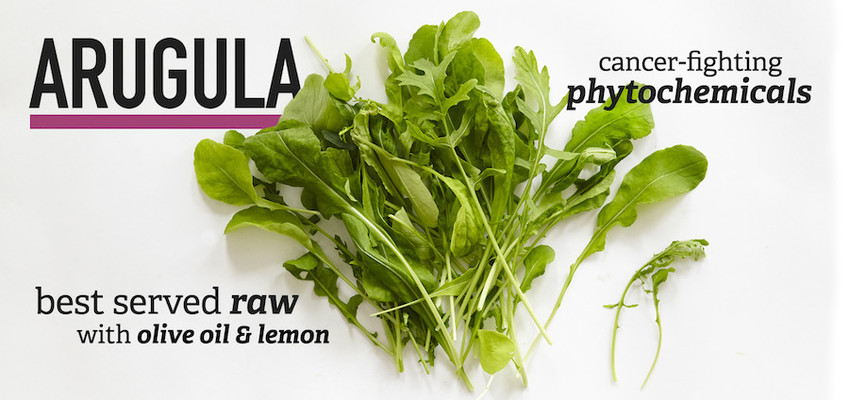
Health Benefits
- Cancer-fighting properties from phytochemicals
- Vitamins A, B-6, C, K, thiamin, riboflavin and niacin, which help with everything from bone formation, neurological health + detoxification
- Metabolism-controlling minerals such as copper and iron
How To Eat
- Serve raw in salads, over grains, with meat and fish.
- Dress minimally, with olive oil + lemon or balsamic vinegar, sea salt + fresh pepper
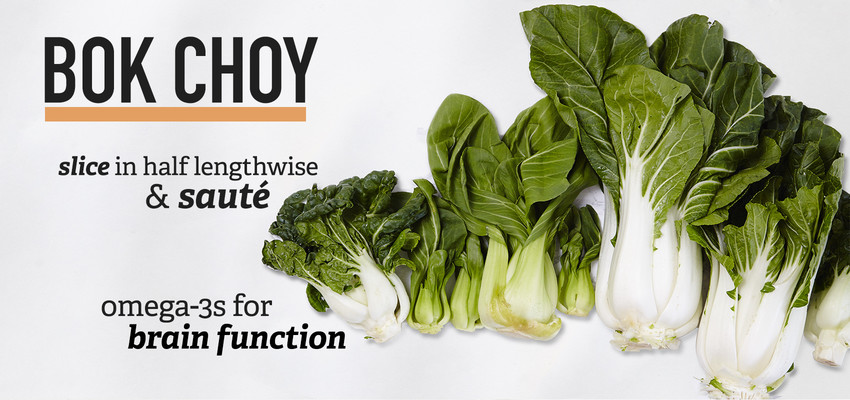
Health Benefits
- Omega-3s for brain function and anti-inflammatory properties
- High levels of vitamin K, a fat-soluble vitamin known for bone health and lowering inflammation
- Zinc, which helps to regulate hormones
- Antioxidant support from vitamins A and C and flavonoids
How To Eat
- Cut heads in half lengthwise and sauté in a small amount of olive oil for 5 minutes or less — season as desired.
- Slice + serve raw in salad or slightly cooked in stir-fries or other sautéed dishes
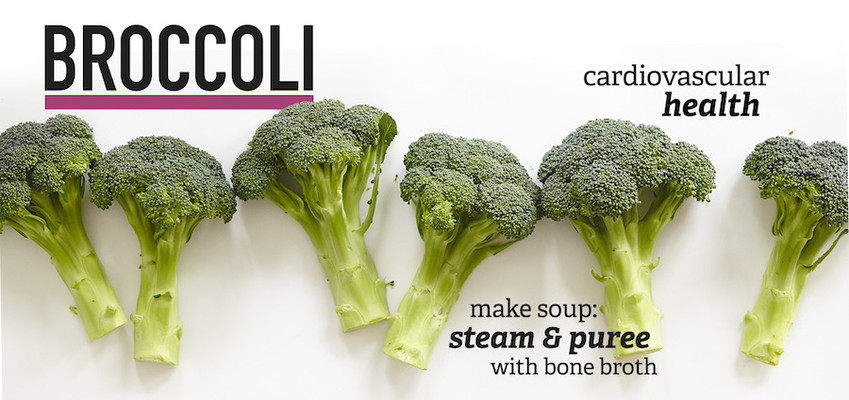
Health Benefits
- Fiber content for digestive support + cholesterol-lowering benefits
- Anti-inflammatory, pro-detox + antioxidant benefits for cancer-fighting
- B-complex vitamins linked to cardiovascular health
How To Eat
Break into florets, slice stems and either:
- Steam until just slightly cooked (about 2 minutes) and dress with sea salt + lemon or puree with bone broth for soup
- Serve raw with a favorite dressing, hummus or dip
- Use in stir-fries or other sautéed dishes
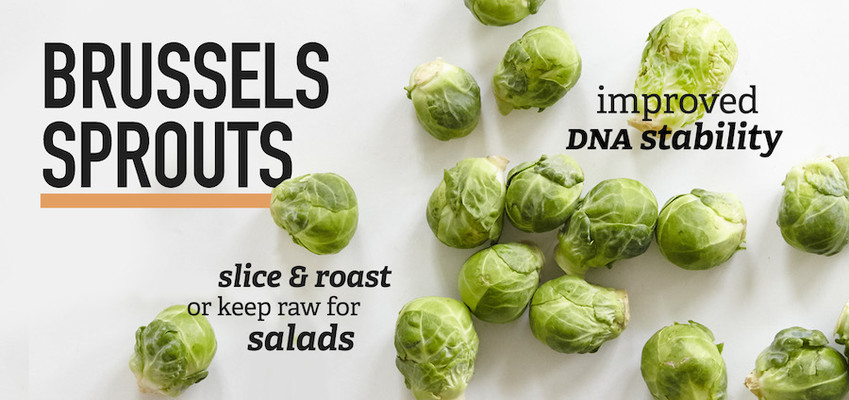
Health Benefits
- Fiber content contributes to digestive support + cholesterol-lowering benefits
- High in detoxifying + cancer-fighting glucosinolates phytonutrients
- Elements in sprouts linked to improved DNA stability
How To Eat
- Remove stems and any discolored outer leaves, then:
- Slice in half lengthwise and pan sear, cut-side down, for a few minutes until brown. Season lightly.
- Steam whole and drizzle with olive oil and lemon or tamari.
- Slice + roast or keep raw for salads
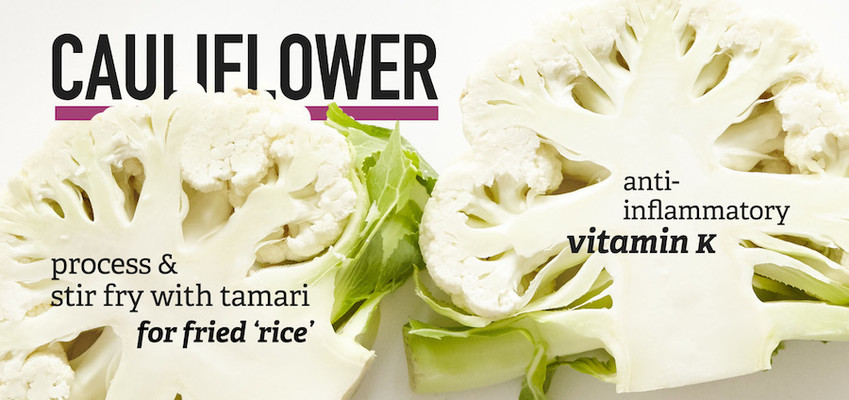
Health Benefits
- Detoxifying phytonutrients + antioxidant benefits from vitamin C + manganese lower chronic stress + risk of cancer
- Excellent source of anti-inflammatory vitamin K
- High fiber content for digestive support
How To Eat
- Process + stir fry with aromatics + tamari for fried 'rice'
- Sauté florets with coconut oil + turmeric
- Roast florets with olive oil + salt
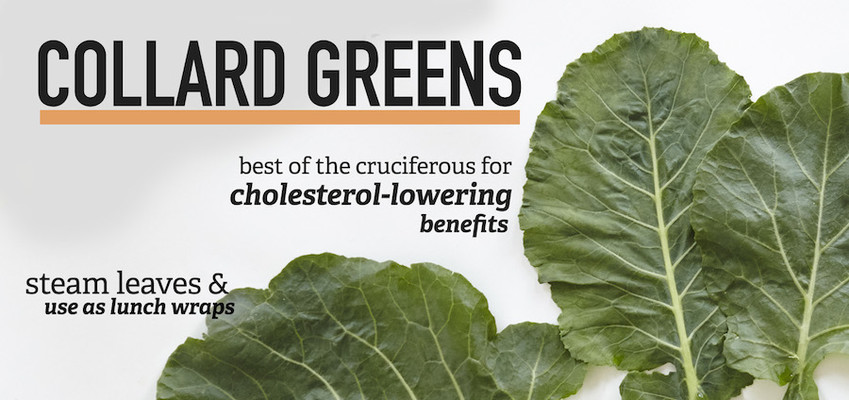
Health Benefits
- Best of the cruciferous for cholesterol-lowering benefits by binding bile in digestive track, making it easier to exit the body
- Cancer-fighting glucosinolates support detox + anti-inflammatory systems
How to Eat
- Steam for just a minute or two and use as a lunch wrap
- Slice + sauté with chili flakes + serve with black eyed peas
- Slice very thinly, marinate in lemon + toss in salads
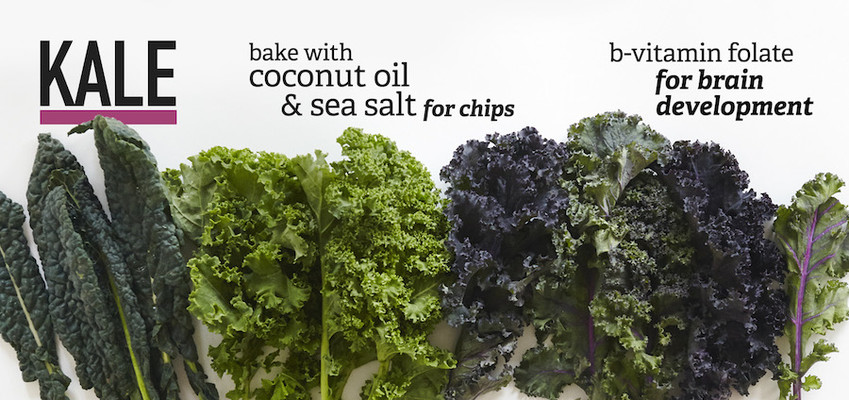
Health Benefits
- B-vitamin folate is key for brain development
- Fiber + protein content manage hunger + satiate
- Lutein + zeaxanthin, nutrients protect against macular degeneration
How To Eat
- Slice + sauté with olive oil and garlic
- Bake with coconut oil + sea salt for chips
- Slice very thinly, marinate in lemon + toss in salads
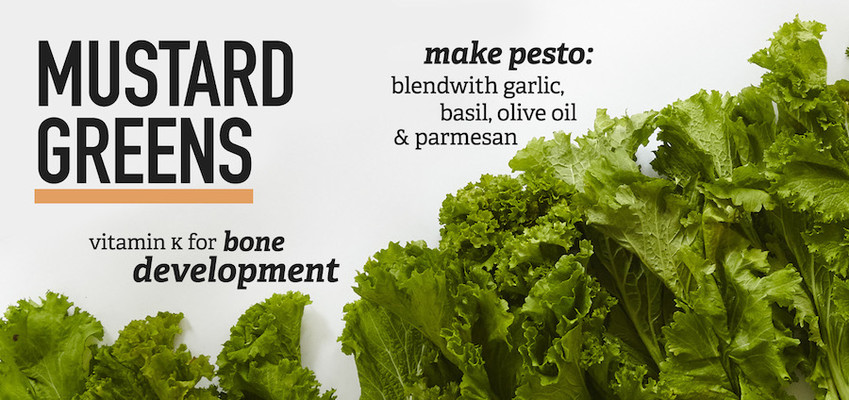
Health Benefits
- High-fiber for gut health
- Vitamin K for bone development + limiting neuronal brain damage
- Indoles may inhibit cancer-cell growth
How To Eat
- Braise with broth + vinegar
- Sauté with olive oil, chili flakes + lemon
- Blend with garlic, basil, olive oil + parmesan for pesto
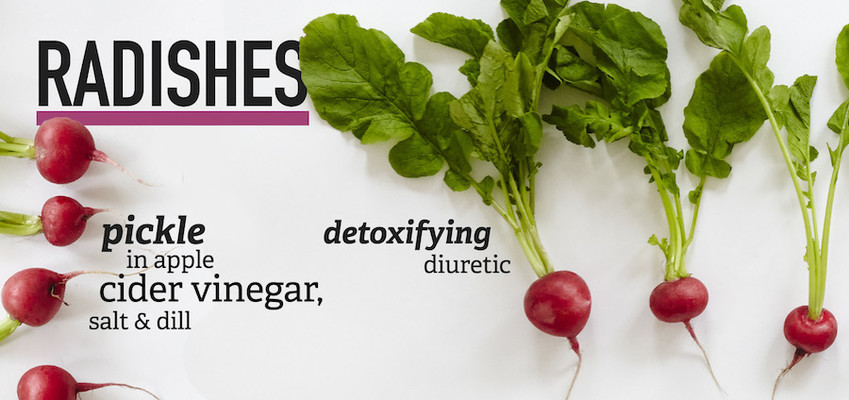
Health Benefits
- This detoxifying diuretic increases urine production
- High levels of vitamin C and anthocyanins may inhibit cancer-cell growth
- B + C vitamins, zinc, phosphorus + high water content benefit the skin health + appearance
How To Eat
- Cut in quarters + serve with herbed yogurt + sea salt
- Slice thin + toss in salads
- Pickle in apple cider vinegar, salt + dill
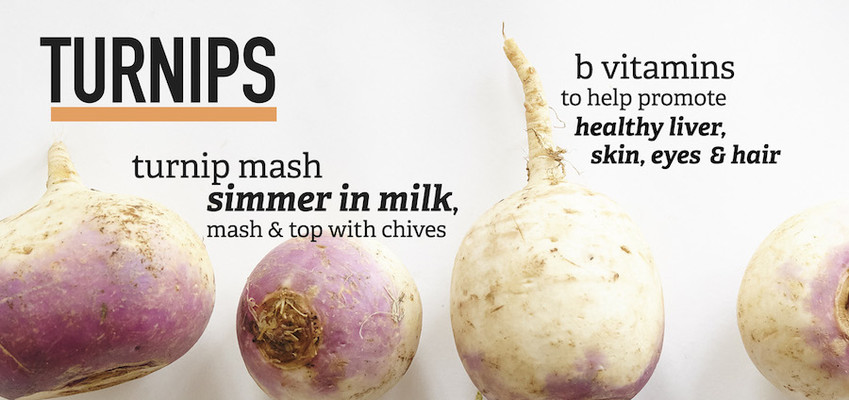
Health Benefits
- B vitamins help promote healthy liver, skin, eyes + hair
- Calcium for bone, muscle + nervous system health
- Indoles inhibit cancer-cell growth
How To Eat
- Sauté sliced turnips with garlic, greens + a squeeze of lemon
- Turnip mash: simmer in milk, mash + top with chives
References:
Photography by Vanessa Rees
Food Styling by Christina Liva
from http://www.mindbodygreen.com/0-18004/the-ultimate-guide-to-cruciferous-vegetables.html
Monday, March 23, 2015
Raw Rainbow Cake from Fullyraw Kristina
https://www.youtube.com/watch?v=45OMzEbHFUw
 We made ours as cupcakes! Thanks Sibi for you help today!!!
We made ours as cupcakes! Thanks Sibi for you help today!!!Ingredients:
Crust
1 1/2 cups dried mulberries
1 cup pitted dates
1 TBS cinnamon
press into the bottom of a springform pan or muffin cups for individual servings
Layers:
Red
1 1/2 cups strawberries
2-3 pitted dates
2 TBS cashews
blend in a high speed blender and spreading the smooth filling over the crust.
Orange:
1 1/2 cups papaya
2 TBS cashews
blend in a high speed blender and spreading the smooth filling over the the strawberry layer
Yellow:
1 cup pineapples
1-2 banana
blend in a high speed blender and spreading the smooth filling over the papaya layer
Green:
2-3 banana
1 TBS powdered barley grass, wheatgrass or spirulina (we used 3 wheat grass tablets)
blend in a high speed blender and spreading the smooth filling over the pineapple layer
Blue/purple:
1 cup blueberries or blackberries
2-3 banana
blend in a high speed blender and spreading the smooth filling over the over the banana layer
Top with fruit sprinkles or berries
freeze 4-7 hours
Wednesday, March 18, 2015
buffalo zucchini chips with ranch
These are amazing! The raw ranch dressing was a dressing, not a dip. For a dip we would use less almond milk. Next time we double the herbs.
The recipe is from:
http://www.rawmazing.com/raw-buffalo-zucchini-chips-with-ranch-dipping-sauce/?inf_contact_key=5a5723a02f788f01126a4b10c642723463a97e28a130d4ed0e5cdf338591e9b0
The recipe is from:
http://www.rawmazing.com/raw-buffalo-zucchini-chips-with-ranch-dipping-sauce/?inf_contact_key=5a5723a02f788f01126a4b10c642723463a97e28a130d4ed0e5cdf338591e9b0
Buffalo Zucchini Chips with Ranch Dipping Sauce
Breading
- 1 cup dried almond pulp or almond flour (there is a great tutorial on making almond flour here: Almond Flour)
- 1 teaspoon chipotle powder (We didn't use this our son doesn't like it so we doubled the paprika)
- 1 teaspoon smoked paprika
- 1 teaspoon garlic powder
- 1 teaspoon onion powder
- 1/2 teaspoon Himalayan salt
- a few grinds fresh pepper

1. Stir all ingredients together in bowl.
Zucchini Chips
- 2 medium zucchini, sliced 1/4 inch thick (we continued to cut the zucchini until the breading was gone, 3-4 zucchini)
- fresh almond milk (or other nut-milk)
- breading (see recipe above)
1. Dip zucchini slice in almond milk.
2. Dip in breading.
3. Place on dehydrator screen and dehydrate at 145 degrees for one hour*. Lower temp and finish dehydrating until soft. Approximately 8 – 10 hours.
4. Alternatively (not raw), place on baking sheet and bake at your oven’s lowest temp. Check for doneness frequently.
Ranch Dipping Sauce (we used this as a salad dressing as well)
Almond “Butter” Milk
- 1 cup fresh almond milk
- 2 teaspoons raw apple cider vinegar
1. Stir vinegar into almond milk. Let sit for 10 minutes to develop.
Sauce
- 1 cup cashews, soaked until soft
- 1 cup almond “buttermilk”
- 2 tablespoons lemon juice
- 1 teaspoon dill
- 1 teaspoon parsley
- 1/2 teaspoon garlic powder
- 1/2 teaspoon onion powder
- 1/2 teaspoon himalayan salt
- few grinds fresh pepper
- 2 tablespoons chopped chives
1. Place all ingredients except for chives in high-speed blender. Blend until smooth. Stir in chives. Serve with Zucchini Chips.
Homemade Bleach alternative
Bleach Alternative
1 ½ cups 3% hydrogen peroxide
1/2 cup lemon juice
Water to fill a gallon jug
12 drops lemon essential oil
1/2 cup lemon juice
Water to fill a gallon jug
12 drops lemon essential oil
Place a funnel in the top of a gallon jug and pour in the hydrogen peroxide and lemon juice. Remove the funnel and fill the jug with water. Add the lemon essential oil. Cap the jug and shake to combine.
To use: Add one cup of bleach alternative per load of white laundry. Add one cup of the bleach alternative solution to the bleach dispenser in your washing machine or directly into the washing machine along with cleaning liquid as the machine fills up with water, before adding the white laundry. Wash as usual. The clothes will come out of the washer fresh, clean, and whiter.
http://farmersalmanac.com/home-garden/2015/03/16/ditch-chlorine-bleach-alternative/
Thursday, March 12, 2015
Raw Blueberry Banana Cobbler
Blueberry Banana Cobbler
Serves 1-2
Ingredients:
Filling
1 banana
1 cup blueberries
1/4 tsp vanilla
1/4 cup dried mulberries
Directions:
Process mulberries in the food processor until ground. Add vanilla, banana and blueberries. Process until well mixed
Pour into bowl
Topping
1/4 tsp cinnamon
2 TBSP almonds, chopped
Directions:
Combine ingredients
Sprinkle over the cobbler filling
Serve immediately or refrigerate until ready to eat.
Nutritional information:
calories: 284
fat: 7.4 g
carbs: 55.9 g
fiber: 9.8 g
protein: 5.1 g
Tuesday, March 10, 2015
Hazelnut Silk Petit Four
This recipe is from https://rawfoodmagazine.com/hazelnut-silk-petit-four/
Ingredients
- 2 cups fresh organic raspberries (we used strawberries)
- 1 cup raw organic coconut oil
- 2 TBSP fresh organic mint, fine chopped
- 3 TBSP raw organic 100% maple syrup (sap)
- 1/3 cup raw organic agave syrup
- 1 1/3 cup raw organic 100 % cacao powder
- 2/3 cup RAWMIO brand HAZELNUT SILK spread (room temperature) (We used raw nutella see bottom for recipe*)
- 1 cup sun-dried raw organic coconut meat, fine grind in food processor (we didn't add any coconut)
- 1 1/2 tsp fresh ground Himalayan pink salt
Helpful Equipment:
- 4 cup Pyrex measuring cup
- Small pot (Pyrex fits into it easily)
- Calibrated thermometer
- 2 square silicon ice cup trays, 15 cube capacity each (we used mini muffin tins for most of them and the silicon tray for 6)
Directions
- First prep: 1/3 cup fresh organic mint, chiffonade (lay the leaves the same direction stacked on top of each other, tightly roll up into a lengthwise tube, small slice the roll width wise to make fine ribbons)
- Make a double boiler with a small pot and a 4 cup Pyrex measuring cup. Place the Pyrex cup in the pot and carefully fill the pot with warm water to cover the outside of the Pyrex half way up the sides. Be sure not to get water into the Pyrex. Place on your stove top and turn on medium.
- Using a calibrated thermometer, heat the water to 110 degrees F, reduce the heat to simmer.
- In your food processor, puree your raspberries until smooth.
- Place on a solid tray of your dehydrator and dehydrate for 1 hour.
- While the puree is dehydrating, place your coconut oil in the Pyrex and warm until completely melted, add in the fine chopped mint and stir well. Allow to rest for 5 minutes.
- Now whisk in the maple syrup and agave syrup until smooth.
- Now add in the cacao powder and whisk until smooth, this is your chocolate base.
- Place your silicon trays on a flat surface.
- Whisk your chocolate mix again. Place in the bottom of each cube 2 tsp of the chocolate base, tap the bottom outside of the tray to release any air bubbles.
- Place in your freezer on a flat surface for 30 minutes.
- Remove the Pyrex from the double boiler, wash and dry.
- Return the Pyrex to the double boiler. Now place the hazelnut spread into the cleaned Pyrex and warm it until it is smooth and creamy.
- Slowly add the ground coconut and blend well; this is your spread mix.
- Remove the silicon trays from the freezer and place on a flat surface.
- Place 1 tsp of the spread mix on top of the chocolate base.
- Gently pack the spread mix to the corners and in an even layer. Return the silicon trays to the freezer on a flat surface for 30 minutes.
- Remove your processed raspberry puree from the dehydrator into a clean bowl.
- Remove your silicon trays from the freezer and place on a flat surface. Place 3/4 teaspoon of the raspberry puree in each cube, this will fill the cube almost to the top of the form. Gently tap the outside of the tray to release any air bubbles.
- Top each evenly with a small pinch of pink salt.
- Return the silicon trays to the freezer and freeze for 2 hours.
- Gently remove the frozen confection from the trays and place on a flat tray raspberry side up.
- Cover and freeze overnight (8 to 10 hours).
- When you are ready to serve: remove the confections from the freezer, place on your display dish or serving dishes and evenly garnish with the chiffonade mint as shown in the picture above.
- Allow to defrost for 5 minutes and serve. BON APPETIT!
* Raw vegan Nutella from http://www.food.com/recipe/raw-vegan-nutella-501828
1 cup raw hazelnuts
2 tsp vanilla extract
3 TBS raw cacao
4 TBS maple syrup (we used 6 pitted medjool dates)
1/4 tsp salt (we reduced the salt to an 1/8 tsp)
1 TBS coconut oil (we used cacao butter)
1/2 cup almond milk
blend nuts until forming a paste. Add cacao butter and continue blending until it stats to getting smooth. Add remaining ingredients and blend until creamy and spreadable.
Saturday, March 7, 2015
March Potluck
This month's potluck's theme is to use a green ingredient. We served green/hibiscus tea with the meal. As always the meal was amazing!!!

Spinach Salad
spinach
green and red peppers
green beans
Sweet and Sour Broccoli from http://heal-thy-self-cb.blogspot.com/2014/04/raw-sweet-and-sour-broccoli-salad.html
 We doubled the recipe. We used pumpkin seeds and sunflower seeds, as well as an apple and a pear. We used pomegranate seeds. We reduced the oil to 4 TBS (for a double batch) to reduce the fat content.
We doubled the recipe. We used pumpkin seeds and sunflower seeds, as well as an apple and a pear. We used pomegranate seeds. We reduced the oil to 4 TBS (for a double batch) to reduce the fat content.
2-3 cucumbers sliced lengthwise with a mandolin or knife
Avocado Spread:
2 ripe avocados
¼ C hemp seeds
¼ C lemon juice
Basil
Green onion
Process in the blender.
Thinly spread the avocado spread on the cucumber slices.
Filling:
Julianne carrots
Julianne zucchini
Thin slices red bell pepper
Put the vegetables at one end of the cucumber and roll. Put a toothpick through to hold together.
 Hummus, celery, and cucumber platter
Hummus, celery, and cucumber platteroil-free hummus with a smoked paprika

Fruit Salad
apples
grapes
strawberries
Chocolate Kiwi Dessert
Crust:
1/4 almond
3/4 pecan
3 dates
2 TBS coconut sugar
1/2 tsp cinnamon
Process in a food processor until crust-like. Reserve 1/3-1/2 cup for filling. Press the remaining crust into pie pan. Line sides of pie pan with sliced kiwi.
Chocolate Bottom:
3/4 cacao powder
1/3 cup maple syrup
1/3 cup cacao butter, melted
Mix ingredients together and pour over crust
Filling:
banana
8 dates
2 TBS maple
1 tsp vanilla
1/3-1/2 cup crust mix
Process in a high speed blender or food processor until smooth. Pour over chocolate bottom.
4-5 kiwi peeled and sliced, some for the side and the remaining for the top.
Chocolate drizzle
1/4 cup cacao powder
3 TBS cacao butter, melted
2 TBS maple syrup
1 TBS vanilla
Mix and pour over top of kiwi.
Thursday, March 5, 2015
Top 41 Powerhouse Fruits and Vegetables
These are the results from the journal of Preventing Chronic Disease
http://www.cdc.gov/pcd/issues/2014/13_0390.htm
"This study developed and validated a classification scheme defining PFV as foods providing, on average, 10% or more daily value per 100 kcal of 17 qualifying nutrients. Of 47 foods studied, 41 satisfied the powerhouse criterion and were more nutrient-dense than we"
"The classification scheme was robust with respect to nutrients protective against chronic disease (97% of foods classified as PFV were separately classified as such on the basis of 8 nutrients protective against cancer and heart disease). For ease of interpretation, scores above 100 were capped at 100 (indicating that the food provides, on average, 100% DV of the qualifying nutrients per 100 kcal). Items in cruciferous (watercress, Chinese cabbage, collard green, kale, arugula) and green leafy (chard, beet green, spinach, chicory, leaf lettuce) groups were concentrated in the top half of the distribution of scores (Table 2) whereas items belonging to yellow/orange (carrot, tomato, winter squash, sweet potato), allium (scallion, leek), citrus (lemon, orange, lime, grapefruit), and berry (strawberry, blackberry) groups were concentrated in the bottom half (4–7)."
http://www.cdc.gov/pcd/issues/2014/13_0390.htm
"This study developed and validated a classification scheme defining PFV as foods providing, on average, 10% or more daily value per 100 kcal of 17 qualifying nutrients. Of 47 foods studied, 41 satisfied the powerhouse criterion and were more nutrient-dense than we"
"The classification scheme was robust with respect to nutrients protective against chronic disease (97% of foods classified as PFV were separately classified as such on the basis of 8 nutrients protective against cancer and heart disease). For ease of interpretation, scores above 100 were capped at 100 (indicating that the food provides, on average, 100% DV of the qualifying nutrients per 100 kcal). Items in cruciferous (watercress, Chinese cabbage, collard green, kale, arugula) and green leafy (chard, beet green, spinach, chicory, leaf lettuce) groups were concentrated in the top half of the distribution of scores (Table 2) whereas items belonging to yellow/orange (carrot, tomato, winter squash, sweet potato), allium (scallion, leek), citrus (lemon, orange, lime, grapefruit), and berry (strawberry, blackberry) groups were concentrated in the bottom half (4–7)."
Table 2. Powerhouse Fruits and Vegetables (N = 41), by Ranking of Nutrient Density Scoresa, 2014
| Item | Nutrient Density Score |
|---|---|
| Watercress | 100.00 |
| Chinese cabbage | 91.99 |
| Chard | 89.27 |
| Beet green | 87.08 |
| Spinach | 86.43 |
| Chicory | 73.36 |
| Leaf lettuce | 70.73 |
| Parsley | 65.59 |
| Romaine lettuce | 63.48 |
| Collard green | 62.49 |
| Turnip green | 62.12 |
| Mustard green | 61.39 |
| Endive | 60.44 |
| Chive | 54.80 |
| Kale | 49.07 |
| Dandelion green | 46.34 |
| Red pepper | 41.26 |
| Arugula | 37.65 |
| Broccoli | 34.89 |
| Pumpkin | 33.82 |
| Brussels sprout | 32.23 |
| Scallion | 27.35 |
| Kohlrabi | 25.92 |
| Cauliflower | 25.13 |
| Cabbage | 24.51 |
| Carrot | 22.60 |
| Tomato | 20.37 |
| Lemon | 18.72 |
| Iceberg lettuce | 18.28 |
| Strawberry | 17.59 |
| Radish | 16.91 |
| Winter squash (all varieties) | 13.89 |
| Orange | 12.91 |
| Lime | 12.23 |
| Grapefruit (pink and red) | 11.64 |
| Rutabaga | 11.58 |
| Turnip | 11.43 |
| Blackberry | 11.39 |
| Leek | 10.69 |
| Sweet potato | 10.51 |
| Grapefruit (white) | 10.47 |
a Calculated as the mean of percent daily values (DVs) (based on a 2,000 kcal/d diet) for 17 nutrients (potassium, fiber, protein, calcium, iron, thiamin, riboflavin, niacin, folate, zinc, and vitamins A, B6, B12, C, D, E, and K) as provided by 100 g of food, expressed per 100 kcal of food. Scores above 100 were capped at 100 (indicating that the food provides, on average, 100% DV of the qualifying nutrients per 100 kcal).
Subscribe to:
Posts (Atom)









